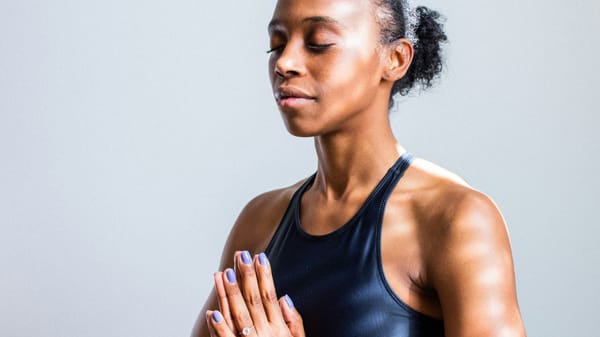Ostelin Bone Strength, Another Pill More Harmful Than Helpful
And what clinical studies tell us

Ostelin Bone Strength as the name implies suggests the idea that this product will provide you with an increase or sustained ”Bone Strength”
This idea of “Bone Strength“ is misleading and a media spin created by, Publicis Mojo and Sanofi-Aventis and are possibly false or misleading claims and borderline in breach of the Australian Consumer Law under Advertising and selling guide.

Summary
- Two companies worth AU$74.39 billion (2019) produce a $10.99 bottle of pills containing Calcium (from Calcium carbonate - $2.99 on eBay) + Vitamin D3 (from sheep’s wool)
- They have empty claims where nothing is certain, with words like “may help“ “can’t get“ “plans in your 30’s“ “some factors“ “can be useful“. To avoid federal trade commission penalties. You hear them every day, everywhere.
- They pick the medical literature that best supports their claims, even if it is not conclusive so you can justify buying it “Just in case it helps“. This is achieved but having gaps in their claims for you to fill in
- Medical papers from Johns Hopkins Hospital, Harvard Medical School and Mayo Clinic ranked the top hospital in the U.S.A. and other researchers advocate towards strength training exercise.
- The same hospitals advise against calcium supplements as contributors to heart attacks and heart disease
- Read highlights of referenced papers at the end of this post
Welcome to Media Spin
A form of propaganda, achieved through knowingly providing a biased interpretation of an event or campaigning to influence public opinion about some organization or public figure
Here’s the everyday cycle of many products and adverting agencies, how and why you consume them.
Fun looking consumers trusting and enjoying a product (Ostelin) based on a masterful spin of claims by Ostelin and Publicis, where no one gets caught by the Federal trade commission of Consumer information
What’s the aIm here? Money 🤑🤑🤑
- Increase the AU$804.04 million in sales by Sanofi-Aventis in Australia. To provide some context Sanofi-Aventis Healthcare is a French multinational pharmaceutical company Founded 1973 with 100,409 employees and a 2019 revenue of AU$56.99 billion globally, in Australia, 725 employees that generate AU$804.04 million in sales. By 2013 was the world's fifth-largest by prescription sales.
- Increase Publicis Mojo Revenue, part of the Publicis Groupe (Revenue of AU$17.4 billion in 2019)

What about your health? 👨⚕️👨⚕️👨⚕️
Ostelin Bone Strength is a supplement made Ostelin owned by Sanofi-Aventis Healthcare. Ostelin provides a number of supplement for “Bone Strength” that provide key nutrients that maintain bone strength being the main ingredients Calcium (from Calcium carbonate), Vitamin D3 and Vitamin K2.
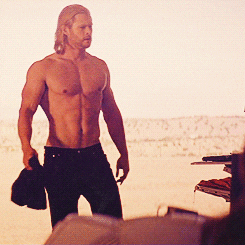
Ostelin’s claims
Why Bone Strength matters in your 30’s 🦴🦴🦴
Published October 14, 2020
Here’s an excerpt of whats wrong with the original Ostelin’s page explaining why “Strong bones are essential for the quality of life“ and why Australians should have to pay to have them both (the strong bones and the quality of life). FYI, my notes are written in this font
You can’t get bone mass back once it’s lost.
How and why do we lose it its whta’s relevant here asDeborah Sellmeyer, M.D., medical director of Johns Hopkins Metabolic Bone Center explainsa team of specialized cells is constantly updating the microscopic framework of collagen (a type of protein) and minerals, including calcium, that keeps bones strong.. Until about age 25, it adds more new bone than it takes away, so bone density increases. From about age 25 to age 50, bone density tends to stay stable with equal amounts of bone formation and bone breakdown. After age 50, bone breakdown (resorption) outpaces bone formation and bone loss often accelerates, particularly at the time of menopause.
Our bones are living, growing tissues. So, no matter your age, making decisions that support long-term bone strength will always make a difference.
Do you mean making the ill-advise decision to buy calcium supplements?Making plans in your 30’s will help give you the strength you need for strong bones later in life. Consuming enough Vitamin D and Calcium in your 30’s is one way you can do this.
Why in your 30? because thats another 20 years selling calcuim supplemnts whenDeborah Sellmeyer, M.D., medical director of Johns Hopkins Metabolic Bone Center explainsAfter age 50, bone breakdown (resorption) outpaces bone formation and bone loss often accelerates, particularly at the time of menopause.
Improving bone strength at any age
There are some factors which can influence peak bone mass which we have no control over, such as genetics The link of this article has not relationship to genetics, as explined before peak bone mass has not relevance and its been use here to “suggest“ you need pills
There are, however, ways you can reduce the loss of bone mass as you get older. The diet and exercise in our 20’s and 30’s may help you maintain and improve your bone strength or maintain muscle mass, strength and functional capacity. May, as defined by Oxford Languages “expressing possibility.“ and “used to say that something is possible“
In fact, its not “may“, it is paramount to reduce the loss of bone mass as researched by Medical paper from Johns Hopkins Hospital, Harvard Medical School and Mayo Clinic
Using supplements to help maintain required nutrient levels
Again there’s no need to “Using supplements to help maintain required nutrient levels” but they have been not recommended by the Food Standards Australia and New Zealand and ill-advised by recommending agains supplementation by Johns Hopkins Hospital, Harvard Medical School and Mayo Clinic
Calcium – fast facts:
- Despite calcium is readily available in many different food sources in Australia, 73% of women don’t get enough calcium from their diet alone.
The data is from 2006 🙄, yes 15 years old. what it really means not to get enough calcium? getting weaker bones? hip fracture incidence? according to the2012 systematic review of hip fracture incidence and the probability of fracture worldwideand Ten-year probability of a major fracture (in per cent) in men and women aged 65 years with a prior fragility fracture and no other clinical risk factors) at the threshold of osteoporosis as judged by BMD (bone mineral density), Australia is at the lowest risk of almost all counties
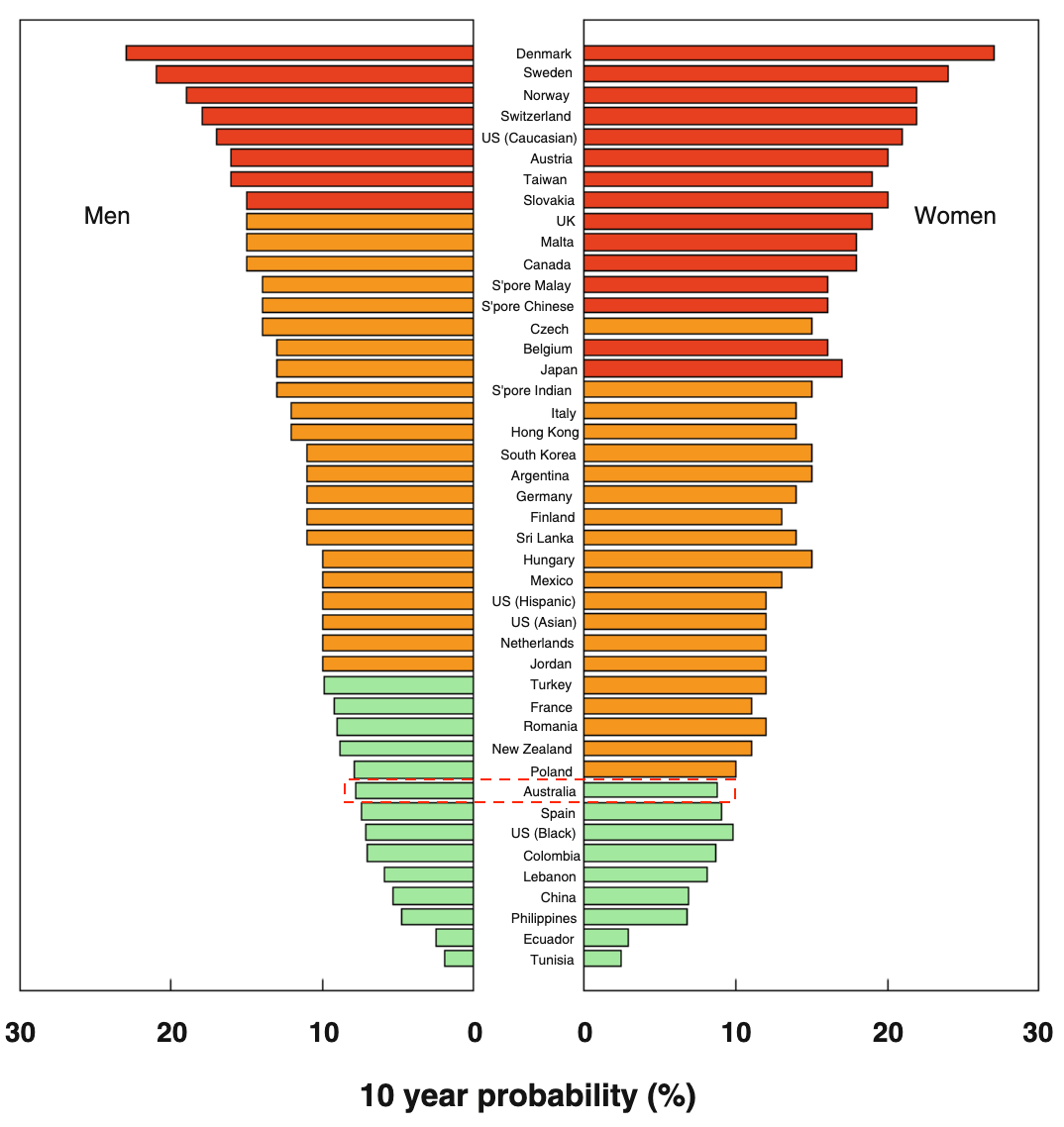
- The use of a supplement can be useful in maintaining adequate levels of calcium in the diet.
How? Where is the data?
Ostelin Bone Strength Solution? Take Ostelin pills
Calcium is a mineral required for the growth and maintenance of bones and teeth, as well as the proper functioning of the muscular and cardiovascular systems. Milk and milk-based foods are the richest sources of calcium in the Australian diet, although it is also found in other products. Calcium requirements are higher for adolescents undergoing bone mass growth. Bone mass stabilises for adults until deteriorating after about age 50 for men and after menopause for women. Low calcium intake is linked to osteoporosis, a low bone density condition particularly affecting post-menopausal women.
Here they make us make a link between milk consumption and bone mass, there’s no link.
Amy Lanou PhD, nutrition director for the Physicians Committee for Responsible Medicine in Washington, D.C. explains
“The countries with the highest rates of osteoporosis are the ones where people drink the most milk and have the most calcium in their diets. The connection between calcium consumption and bone health is actually very weak, and the connection between dairy consumption and bone health is almost non-existent.”
Bones constantly renew themselves to stay strong and healthy. This process is called bone remodelling, where old bone is removed and replaced with new bone. This is important because it allows the bone to become stronger. More bone is built than it is broken down until we are in our 30s when we reach our peaks bone mass. Making plans in your 30’s will help give you the strength you need for strong bones later in life.
Make plans for Australians to spend up to 107,539,760,000 Billions of potential Ostelin Calcium sales, if peaks bone mass reaches your The 30s, why is powerlifting world records average age 30? why Australian Bryan McMaster at 80 years old can deadlift 142 kilograms? what about 30 years old Tony Reinmuth
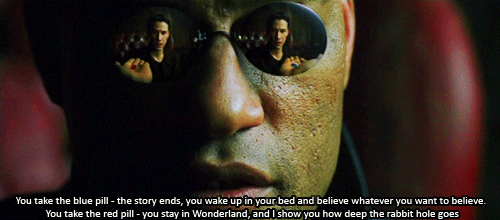
Wanna see how deep the rabbit hole goes, google Sanofi-Aventis funding osteoporosis
What are the numbers behind Ostelin Calcium?💰💰💰
Cost of Ostelin Calcium:
- 1 bottle of Ostelin Calcium & Vitamin D3 Chewable costs AU$10.99
- AU$10.99 for 60 tablets ( two tablets daily recommended) lasts 1 month
- $10.99 x 12 months = $131.88 (per year)
- $131.88 x 52.75 years = $6956.67 per Australian adult life
$6956.67 x 15.46 million (as pe recommended, Australians ages 30 to 85 and over) = 107,539,760,000 Billions of potential sales
Recommended to consume from your 30’s, Australia life expectancy 82.75 years - 30 years = 52.75 years, Australian population (2019) 25.36 million, Australian ages 30 to 85 and over (61% ) = 15.4696 million
Is calcium deficiency a problem in Australia?
Here’s a Global Map of Dietary Calcium Intake, Do you see Australia has Calcium Intake problem? No, it doesn’t
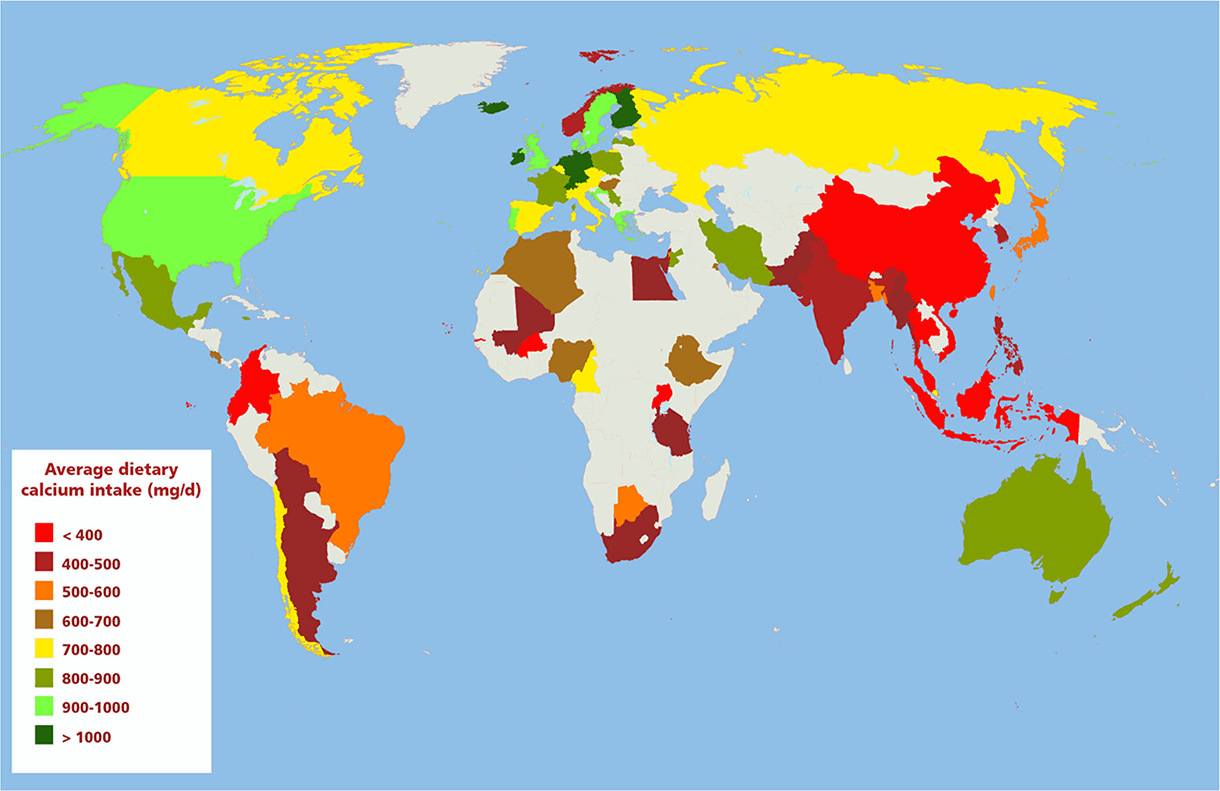
The Media Spin
Strong Women Need Strong Bones!. Don’t we all? by taking this pill? really? 💪💪💪
Strong Women Need Strong Bones is an advertising campaign created by Publicis Mojo Brisbane, targeted at Australian women aged between 50-60.
The campaign aims to "tap into their desire to maintain overall health and fitness" and is based on the premise of them being more active and self-reliant than previous generations. It is led by a television spot and will be supported by print, online and digital executions.
Here’s the script for the ad
we all need vitamin D to keep our bones and muscles healthy and strong but despite Australia's sunny climate one in three of us are vitamin D deficient our challenge was to educate Australian women (1) about this alarming statistic and empower them to stay stronger for longer with austell and vitamin D we spoke with women in their 50s and 60s about the changes they're experiencing in their lives and quickly learned that they're not showing any signs of slowing down they have a lot planned and want to make sure that their body can keep up with their spirit strong women needs strong bones (2) we cast a troop of neon clad dancers comprised of real women in their 40s 50s and 60s our bold engaging style not only blue category conventions out of the water and cemented our position as the market leader (3) but allowed us to focus on the product benefits of bone strength movement and vitality in a new and captivating way the eye-catching campaign was activated through the line and now the curtain has risen on act 2 for the launch of a new product extension osterlen osteo card so the results to date strong of course engagement scores are in the top 11 percent of all ads nationally sales have grown by a whopping 22 percent (4) awareness since launch has doubled we received a sanofi-aventis global industry best result award and 11,000 new Facebook friends and most importantly 350,000 Australians are now actively staying stronger for longer you
- Whos’ role is to educate on health affairs? Publicis Mojo or the Australian official development assistance program with a budget estimate of $577.5 million for 2020-21
- Your ad, sell Australian woman pills with the promise they can keep a healthy lifestyle? How? where is the supporting data? cast a troop of neon-clad dancers comprised of “real women”? 😂😂😂
- Your primary goal as shown by the Market share of leading supplement categories in Australia in the financial year 2019 with just 49.1% of all Australian women aged 35-49 (59%) followed by women aged 50-64 (53%), having purchased vitamins, minerals and/or supplements in an average 6 months. Still behind Blackmores (41.2%) and Swisse (29.7%) account for over 70% of total market share, followed by Sanofi-Aventis with a smaller market share
- Your primary and only company target: 22 % awareness
The ad 🙄
The latest medical research
What’s the role of calcium supplements in ”Bone Strength”?
The paper The Relationship Between Dietary Calcium Intake, Alone or in Association With Vitamin D Status, and Risk of Developing Osteoporosis by the Food Standards Australia and New Zealand explains
- There is no evidence that calcium directly stimulates bone growth.
- Vitamin D is not an important dietary constituent in Australia or New Zealand, virtually all being synthesised in the skin as a result of sunlight exposure.
- Four prospective longitudinal studies in children have been published in this period. These studies suggested that calcium intake only accounts for a few per cent of the variance in rates of bone gain in children and adolescents taking Western diets.
- Ten new randomised controlled trials in children or adolescents were published in this period. Most showed beneficial effects on bone density of about 1%, and these benefits were not sustained after discontinuation of the supplement.
Calcium Supplementation and PTH Response to Vigorous Walking in Postmenopausal Women by Karen L. Shea et al
This study demonstrated that the effect of vigorous or prolonged exercise to trigger increases in PTH and CTX, which had previously been observed only in young male cyclists, also occurs in postmenopausal women during brisk walking.
Parathyroid hormone is directly involved in the bones, kidneys, and the small intestine. In the bones, PTH stimulates the release of calcium in an indirect process through osteoclasts which ultimately lead to resorption of the bones.
Parathyroid hormone (PTH), also called parathormone or parathyrin, is a hormone secreted by the parathyroid glands that regulate the serum calcium concentration through its effects on bone, kidney, and intestine.[5]
PTH influences bone remodelling, which is an ongoing process in which bone tissue is alternately resorbed and rebuilt over time
The C-terminal telopeptide (CTX), also known as carboxy-terminal collagen crosslinks, is the C-terminaltelopeptide of fibrillar collagens such as collagen type I and type II. It is used as a biomarker in the serum to measure the rate of bone turnover
In the article published by Hopkins Medicine, Calcium Supplements: Should You Take Them? the answer:
The Best Calcium Supplement Is None
Erin Michos, MD, MHS, associate director of preventive cardiology for the Ciccarone Center for the Prevention of Heart Disease. explains
“A nutrient in pill form is not processed in the body the same way as it is when ingested from a food source. Furthermore, people believe that the proof that calcium supplements fortify bones is more robust than it really is,” she says. “The truth is, the research is inconclusive. But there is a growing body of evidence that suggests no health benefit, or even worse, that calcium supplements may be harmful.”
Multiple studies have found that there’s little to no benefit to taking calcium supplements for the prevention of hip fractures. On the other hand, recent studies have linked calcium supplements with an increased risk of colon polyps (small growths in the large intestine that can become cancerous) and kidney stones, which are hard masses usually formed in the kidneys from an accumulation of calcium and other substances. Additionally, a 2016 study by Michos and her colleagues suggested that calcium supplements may increase the risk of calcium buildup in the heart’s arteries.
“I’m very concerned about the potential for calcium supplements to contribute to heart attacks and heart disease,” says Michos. “The body can’t process more than 500 milligrams of calcium at a time. If you take a supplement with more than that, your body has to do something with the excess. It’s possible that higher calcium levels in the blood could trigger blood clots or that calcium could be deposited along artery walls, which would contribute to the narrowing of blood vessels.”
A Better Calcium Option
While taking calcium supplements may produce unwanted side effects, meeting your calcium needs through your diet is safe.
“When you get calcium through your diet, you’re taking it in small amounts spread throughout the day along with other food sources, which helps you absorb the nutrient,” explains Michos. “Most people can get adequate calcium through their diet if they make an effort.”
Good dietary sources of calcium include:
- Almonds
- Oranges
- Dried figs
- Soybeans
- Garbanzo, white and pinto beans
- Low-fat dairy such as milk and yogurt
- Leafy green vegetables such as kale and spinach
Exercise to Strengthen Bones
Being active and exercising on a regular basis protects bone health. Weight-bearing exercises such as walking, jogging and weight training are especially helpful in preventing bone loss.
Simply moving more throughout the day supports bone health, too. Research indicates that women who sit for more than nine hours a day are 50 per cent more likely to have a hip fracture than those who are less sedentary.
For most women, skipping calcium supplements in favour of boosting dietary calcium and focusing on weight-bearing exercise is the best way to keep bones strong.
Johns Hopkins Hospital ranked the top hospital in the United States every year from 1991 to 2011 and has 18 Nobel laureates associated with the School of Medicine as alumni and faculty have won the Nobel Prize in Medicine or Chemistry.
In the Harvard Health Publishing article, How well does calcium intake really protect your bones?
Ask anyone how to prevent bone fractures and they’re likely to answer, “Get more calcium.” Medical experts have tended to agree. But in the last five years, we’ve also learned that calcium — at least, in the form of supplements — isn’t risk-free. An intake of 1,000 mg from supplements has been associated with an increased risk of heart attack, stroke, kidney stones, and gastrointestinal symptoms.
Now an analysis of reams of research concludes that consuming calcium at that level doesn’t even reduce fractures in people over 50.
Dr David Slovik, associate professor of medicine at Harvard Medical School and author of our Special Health Report Osteoporosis: A guide to prevention and treatment. explains
“I don’t believe that we’ve ever thought that calcium per se reduces fractures; it’s one part of a larger picture,” he says. You really can’t say ‘Take enough calcium and you’ll be fine.’”
In the analyses conducted by a team of New Zealand researchers led by Mark Bolland, who first identified the cardiovascular risk associated with calcium supplements. The researchers found that, overall, neither dietary calcium nor calcium supplements were associated with a reduction in fractures.
In the second analysis, getting at least 800 mg of calcium a day from the diet or taking at least 1,000 mg of supplemental calcium a day increased bone density. But bone density only increased by about 0.6% to 1.8% — an amount too low to affect fracture risk.
What to do?
“The takeaway is that you shouldn’t be taking calcium with the idea that it will prevent bone fractures,”
Dr Slovik says. But he notes that adequate calcium and vitamin D intake is still essential for healthy bone.
What increases bone density?
In another article by the Harvard Health Publishing, Strength training builds more than muscles, they explain:
Numerous studies have shown that strength training can play a role in slowing bone loss, and several show it can even build bone. This is tremendously useful to help offset age-related declines in bone mass. Activities that put stress on bones can nudge bone-forming cells into action. That stress comes from the tugging and pushing on the bone that occurs during strength training (as well as weight-bearing aerobic exercises like walking or running). The result is stronger, denser bones.
And strength training, in particular, has bone benefits beyond those offered by aerobic weight-bearing exercise. It targets bones of the hips, spine, and wrists, which are the sites most likely to fracture.
Harvard Medical School (HMS) is one of the oldest medical schools in the United States and is consistently ranked first for research among medical schools
Bone quality: the determinants of bone strength and fragility, Hélder Fonseca et al
the results of several studies showing compelling data that physical exercise has the potential to improve bone quality and to decrease fracture risk by influencing each one of these determinants are also reviewed. These findings have meaningful clinical repercussions as they emphasize the fact that, even without leading to improvements in BMD, exercise interventions in patients with osteoporosis may be beneficial by improving other determinants of bone strength.
In the paper Effects of strength and endurance exercise on calcium-regulating hormones between different levels of physical activity LINDA L. et al notes
Regular high intensity exercise will help increase bone density. Strength exercises can maintain bone density not only through mechanical loading, but also through blood pH and biochemical changes in free ionized calcium, which can positively affect bone density.
In the paper PTH Signaling During Exercise Contributes to Bone Adaptation Joseph D. Gardinier, et al explains
In conclusion, exercise subjects bone to increased dynamic loading and PTH levels, both of which are key stimulants for bone adaptation. In this study we demonstrated that PTH signaling during exercise increases trabecular bone formation with a plate-like structure and improves structural-level mechanical properties of cortical bone, while tissue-level properties are modified independent of PTH signaling during exercise. Overall, the distinctive increase in PTH levels during exercise plays a key role in bone adaptation, specifically trabecular bone formation and the structural-level properties of cortical bone, while PTH(1-34) can be used to improve cortical bone formation with superior structural and tissue-level mechanical properties
Parathyroid hormone (PTH), also called parathormone or parathyrin, is a hormone secreted by the parathyroid glands that regulate the serum calcium concentration through its effects on bone, kidney, and intestine
In the article Calcium and exercise both important for bone health by Dr Matthew T. Drake, Endocrinology at Mayo Clinic, Rochester, Minnesota explains
Both calcium and physical activity are important for bone health. But when you consider the net benefits of calcium, especially in supplement form, it’s unlikely to serve as a good substitute for regular exercise. However, recent evidence suggests that increasing calcium intake through supplements has a modest and limited effect on bone density. Calcium supplements also can have certain side effects. They can cause constipation, interfere with other drugs and, at higher doses, may be linked to the development of kidney stones. Studies suggest a potential link between excessive amounts of calcium and conditions such as heart disease and prostate cancer.
On the other hand, regular exercise that uses a variety of muscle groups and includes some strength training helps you build a protective framework around your skeleton. It also helps you move more easily and improves your balance. Exercise helps decrease your risk of falling and breaking a bone, which is the ultimate concern.
In 2016–2020, Mayo Clinic, Rochester, was ranked as the #1 overall hospital in the United States by U.S. News & World Report. A total of almost 5,000 hospitals were considered and ranked in 16 specialties from cancer and heart disease to respiratory disorders and urology
Are they any strong people over 30?
The Barbell, an online publication about bodybuilding, strength, and fitness news, advice, and culture, explains how the average age for strength for World’s Strongest Man, powerlifters and weightlifters is about 30
- Eddie Hall, 33 years old, deadlifted 500 kilograms.
- Mark Felix, 54 years old, deadlifted 345 kilograms nine times
- Janos Fabri, 72 years old, deadlifted 260.5 kg kilograms (3.14 x his bodyweight)
- Donna Moore, 40 years old from the UK, 2 children, the world record for Women's Castle Atlas stone with a 170 kg lift
- Andrea thompson, 36 years old from the UK, 2 children, deadlift 281.681 Kilograms (that's the weight of two fridges)

Want more? Read Rich People Exercise, Poor People Take Diet Pills
Thanks for reading my blog. Subscribe to get 1 actionable insight to improve your mental or physical health backed by medical research, every Saturday.

